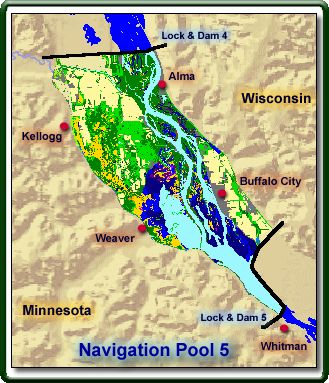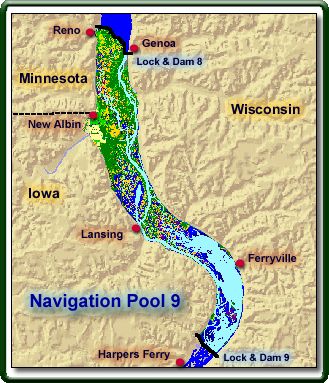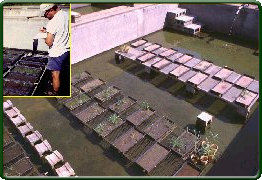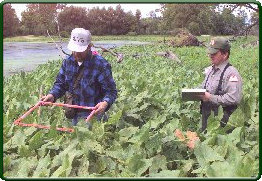Methods Development for the Assessment of Vegetation Response to Experimental Drawdowns on Pools 5 and 9 of the Upper Mississippi River
|
A small scale drawdown Habitat Rehabilitation and Enhancement Project was developed by the U.S. Army Corps of Engineers for the purpose of preserving, protecting, and enhancing backwater fish and migratory bird habitat on the Upper Mississippi River National Wildlife and Fish Refuge. Managers implemented a water level reduction (drawdown) of backwater areas on Lizzy Paul's Pond (Pool 5) and Peck Lake (Pool 9) to dry and consolidate bottom sediments. By exposing the bottom sediments, managers hoped to increase the area of emergent and submersed aquatic vegetation by natural seed germination. Our study was designed to assess the response of vegetation to the drawdowns.
We examined the size and species composition of seed banks at each backwater sight to determine what plant species would potentially grow under favorable moisture conditions. We also determined species composition, density, height, and seed yield of vegetation that actually developed during the drawdown. Seedlings of about 50 species of moist soil, emergent, and submersed aquatic plant species were identified in the backwater seed banks. |
 |
 |
|
|
Results from this study will be used to guide water level management on the Upper Mississippi River. The project was completed in May 2001. Principal Investigator: Kevin Kenow |
|
Page Last Modified: April 3, 2018



